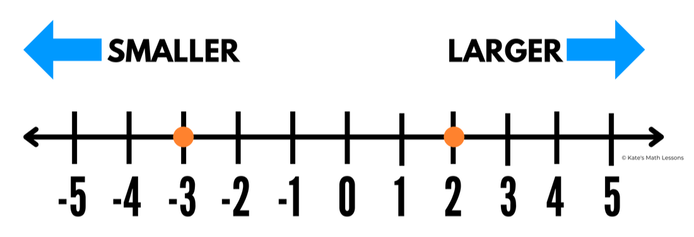In mathematics, integers serve as fundamental building blocks for understanding numerical concepts and solving various problems. So, with the number line as our visual aid, we can gain a deeper understanding of integers and their relationships. Thus, this blog helps in exploring Integers and the Number Line, focusing particularly on the number line. Hence, by the end of this exploration, you’ll be equipped with the knowledge and skills to identify integers on a number line, explain the meanings of positive and negative integers with zero as the reference point, and articulate integer statements in word form, all supported by practical illustrations.
Before we go deeper into exploring integers and number lines, I would like to remind you as a learner that LearnersCamp provides additional insights into these disparities. Additionally, LearnersCamp has grown to become a valuable platform for learners seeking to deepen their understanding of mathematical concepts. Moreover, it has a user-friendly interface and a vast array of educational materials, including articles, tutorials, and interactive quizzes; LearnersCamp offers comprehensive guidance on such topics. Hence, by visiting LearnersCamp, learners can access clear explanations, practical examples, and engaging exercises to solidify their grasp of these fundamental mathematical principles.
Understanding Integers and the Number Line:
Before diving into the specifics of exploring Integers and the number Line, let’s ensure a clear understanding of integers. By definition, Integers are whole numbers, both positive and negative, including zero. They are represented on the number line, a visual tool that helps us visualize numerical relationships and concepts.
The number line extends infinitely in both directions, with zero at the center. To the right of zero lie positive integers, increasing in value as we move further right. To the left of zero lie negative integers, decreasing in value as we move further left.
Identifying Integers on a Number Line:
The number line provides a graphical representation of integers, making it easier to identify and understand their placement and relationships. Let’s take a closer look at how integers are represented on the number line:
- Positive Integers: Positive integers are located to the right of zero on the number line. Each positive integer is represented by a point on the line, with larger values situated further to the right. For example, integers such as 1, 2, 3, and so on, are located successively to the right of zero, indicating their increasing magnitude.
- Negative Integers: Negative integers are located to the left of zero on the number line. Similar to positive integers, each negative integer is represented by a point on the line, with larger (more negative) values situated further to the left. For example, integers such as -1, -2, -3, and so on, are located successively to the left of zero, indicating their decreasing magnitude.
Explanation of Positive and Negative Integers:
Now, let’s explore the meanings of positive and negative integers with zero as the reference point:
- Positive Integers: Positive integers represent quantities greater than zero. They are used to denote gains, profits, quantities, or values that are above a reference point or baseline. For example, a deposit of $50 into a bank account can be represented by the positive integer +50, indicating an increase in the account balance.
- Negative Integers: Negative integers represent quantities less than zero. They are used to denote losses, debts, deficits, or values that fall below a reference point or baseline. For example, a withdrawal of $30 from a bank account can be represented by the negative integer -30, indicating a decrease in the account balance.
Positive or Negative Integer Statements in Word Form:
Understanding how to express positive and negative integers in word form is essential for interpreting numerical statements and solving problems. Let’s explore how positive and negative integers can be articulated in word form when exploring Integers and the Number Line:
- Positive Integer Statements: Positive integers can be expressed in word form by using terms such as plus, gain, increase, or above. For example:
- The temperature rose by 5 degrees.
- The population increased by 100 people.
- Sarah gained 10 points in the game.
- Negative Integer Statements: Negative integers can be expressed in word form by using terms such as minus, loss, decrease, or below. For example:
- The temperature dropped by 8 degrees.
- The company incurred a loss of $200.
- The team fell behind by 3 goals.
Practical Illustrations:
Let’s reinforce our understanding of integers and the number line with practical illustrations:
Illustration 1: Identifying Integers on a Number Line
Consider the following number line:
[ -10 —– -5 —– 0 —– 5 —– 10 ]
Identify the integers represented on this number line.
Solution:
- Integers to the left of zero: -10, -5
- Integers to the right of zero: 5, 10
Illustration 2: Explaining Positive and Negative Integers
Suppose you’re tracking the temperature changes over a week. Use positive and negative integers to represent temperature fluctuations.
Solution:
- Monday: +3 degrees (warmer)
- Tuesday: -2 degrees (colder)
- Wednesday: +5 degrees (warmer)
- Thursday: -4 degrees (colder)
- Friday: +1 degree (warmer)
- Saturday: -6 degrees (colder)
- Sunday: +2 degrees (warmer)
Conclusion:
In conclusion, the number line serves as a powerful visual tool for understanding integers and their relationships. By visualizing integers on the number line, we can identify their placement, explain the meanings of positive and negative integers with zero as the reference point, and articulate integer statements in word form. Through practical illustrations and examples, we’ve gained a deeper understanding of how integers are represented and how to conclusively navigate your way through number line.









